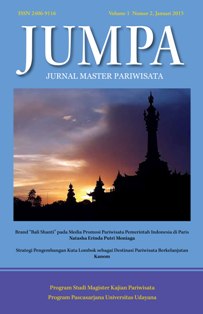MEMBUKA PINTU PENGEMBANGAN MEDICAL TOURISM DI BALI
Abstract
As tourism industry is always increasing, nowadays, it does not only touch the leisure sector, it expands into health industry. Medical tourism is a combination of both health care and leisure activity. It is projected to grow US$38 until US$55 billion per year. In Asia, it successfully attracts visitors which increase by 20% every year because affordable price, yet high quality. Malaysia, Thailand, India and Singapore take this opportunity. These countries take control at least 80% of Asia market share. Unfortunately, Indonesia plays only a small part. Moreover, the data reveals a surprising truth that 57% of Malaysian patients are Indonesian. This raises a paradox, whether it is an irony or opportunity. Thus, this comparative study is conducted based on literature review in qualitative and analyzed through SWOT.
Bali is very potential. It already has three international hospitals, popular for its wellness tourism, rich for its unique culture, sophisticated medical equipments, professional medics and paramedics, and good image for the hospitality.
The next important step is the synergy of every stakeholders which consists of government, academic, media, private sector and community. Those stakeholders have to be eager in seriously creating better regulation, offering an interesting medical tour package, and participating actively.














